Good Friday is an important day in Christianity, marking the crucifixion of Jesus Christ. As a parent or caregiver, it’s important to share the meaning of this day with your child in a way that is simple and easy to understand. Explaining Good Friday to a child can be challenging, but it’s essential to help them appreciate the significance of Jesus’ sacrifice and the messages of love and forgiveness associated with this day.
So, how can you explain Good Friday to a child? In this article, we’ll provide you with a simple and friendly guide on how to talk to your child about Good Friday. We’ll offer suggestions on how to teach them about the story behind this day, the symbols and traditions associated with it, and how to instill the values of love and compassion in their daily lives.
Key Takeaways:
- Explaining Good Friday to a child is important to help them understand the significance of Jesus’ sacrifice and the messages of love and forgiveness.
- Sharing the story of Good Friday, explaining the symbols and traditions, and engaging in age-appropriate activities can all help children better understand this day.
- Instilling the values of love and compassion in children’s daily lives is an important aspect of sharing the messages of Good Friday.
Why is Good Friday Significant?
If your child has ever asked you why Good Friday is called “good,” you may have found it challenging to explain the significance of this day in a way that is easy for them to understand. Good Friday is the day Christians commemorate the crucifixion of Jesus Christ and his subsequent death. It is a solemn day that marks the sacrifice Jesus made for humanity.
Jesus’ death was not a random event, but rather part of a larger spiritual plan. According to Christian beliefs, Jesus was sent to earth to die for the sins of humankind. He willingly accepted his fate, becoming the ultimate sacrificial lamb.
This selfless act of love and devotion is why Good Friday is celebrated by Christians all over the world. It represents Jesus’ ultimate sacrifice and serves as a reminder of the power of forgiveness and redemption.
By explaining the meaning of Good Friday to your child, you can help them understand the significance of this important day in the Christian faith. In the next section, we will explore how to teach your child about Jesus’ sacrifice and the concepts of death and resurrection that are closely tied to Good Friday.
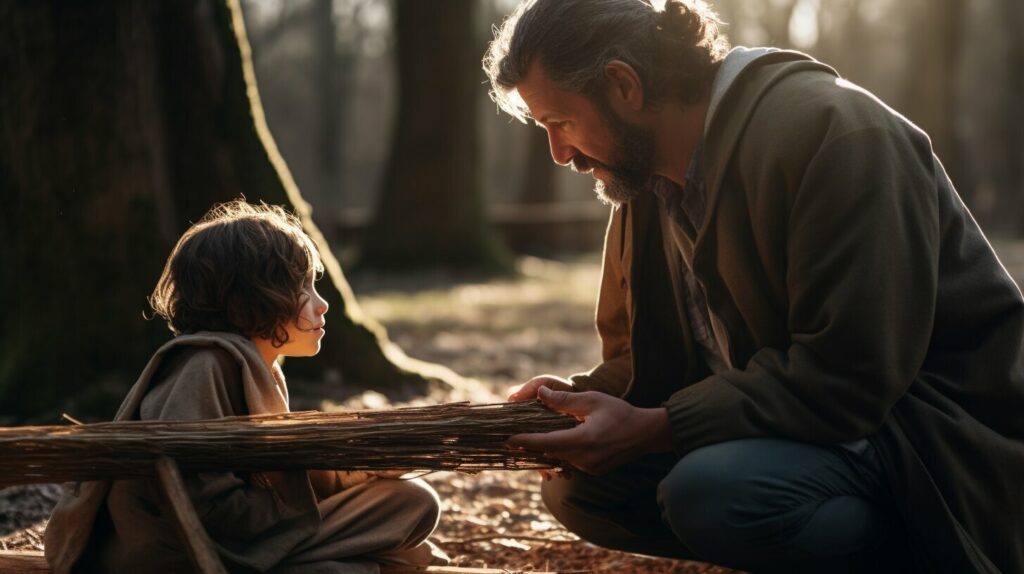
Understanding Jesus’ Sacrifice
Good Friday is a day that remembers the crucifixion of Jesus Christ and his sacrifice for us. This means that Jesus chose to die on the cross so that our sins could be forgiven. It might be difficult for children to understand why someone would choose to die for others, but it’s important to explain that Jesus’ death was a selfless act of love.
Jesus’ sacrifice shows us the power of forgiveness and the importance of empathy. When we forgive others, we show them love and compassion, just as Jesus did. It’s also important to remember that empathy means putting ourselves in other people’s shoes and trying to understand their feelings.
On Good Friday, we remember how Jesus went through a lot of pain and suffering. This helps us appreciate the sacrifice he made for us and reminds us to be grateful for his love and compassion.

When explaining Jesus’ sacrifice to children, it’s important to find age-appropriate ways to present the information. You might use storytelling or visual aids to help them understand the story better. As children grow older, you can provide more details and discuss the broader implications of Jesus’ sacrifice.
Why did Jesus have to die?
Jesus’ death on the cross was necessary to fulfill God’s plan for salvation. This plan involves forgiving the sins of humanity and offering eternal life to those who believe in Jesus. By dying on the cross, Jesus took on the punishment that we deserved for our sins.
What can we learn from Jesus’ sacrifice?
Jesus’ sacrifice teaches us about the power of forgiveness, the importance of empathy, and the depth of God’s love for us. It reminds us to be grateful for the blessings in our lives and to show compassion to others.
Explaining Jesus’ sacrifice to children can be challenging, but it’s an important conversation to have. By presenting the information in a simple and friendly way, you can help children understand the meaning of Good Friday and appreciate the love and compassion of Jesus Christ.
Explaining Death and Resurrection
Explaining death and resurrection to children can be a sensitive topic. However, it is crucial to help children understand these concepts in the context of Good Friday. Death is a natural part of life, and children need to be taught that it is a universal experience.
On Good Friday, Christians commemorate the death of Jesus Christ by crucifixion. Jesus died to save people from their sins, and his sacrifice is a testament to his love for humanity. However, his death was not the end of the story. Jesus rose from the dead on Easter Sunday, demonstrating his power over death.
One way to explain this concept to children is by using simple language and examples that they can relate to. For instance, you can use the image of a caterpillar transforming into a butterfly to illustrate the idea of death and resurrection. Just like a caterpillar dies to become a butterfly, Jesus died so that he could rise again and bring new life to the world.

It is also important to teach children about the hope and joy associated with resurrection. While death can be scary and sad, the idea of new life and second chances can bring comfort and solace. Through Jesus’ sacrifice, we are reminded of the power of forgiveness and the importance of love and compassion.
For God so loved the world that he gave his one and only Son, that whoever believes in him shall not perish but have eternal life.” – John 3:16
By explaining death and resurrection in a simple and age-appropriate way, children can understand the significance of Good Friday and its role in Christian faith.
The Story of Good Friday
Good Friday is the day when Christians remember the crucifixion of Jesus Christ on the cross. It is the day when Jesus sacrificed his life for the forgiveness of sins.
The story of Good Friday starts with Jesus being betrayed by one of his disciples, Judas. He was arrested and brought to trial where he was found guilty of blasphemy and sentenced to death. During this time, he was mocked, beaten, and forced to carry his own cross to the place of his execution.
At the place called Golgotha, Jesus was nailed to the cross next to two criminals. He suffered on the cross for hours, but even in his pain, he forgave those who had wronged him. When he finally died, a great earthquake shook the earth, and his followers mourned his death.
However, the story doesn’t end there. Three days later, Jesus rose from the dead, fulfilling the prophecy that he would come back to life. This event is celebrated on Easter Sunday, which is one of the most important holidays in Christianity.

Jesus said, ‘Father, forgive them, for they do not know what they are doing.'” – Luke 23:34
Exploring Symbols and Traditions
If you want to help your child understand the significance of Good Friday, it can be helpful to explore some of the symbols and traditions associated with this day.
The Cross: The most recognizable symbol of Christianity, the cross is a reminder of Jesus’ sacrifice and his death on the cross.
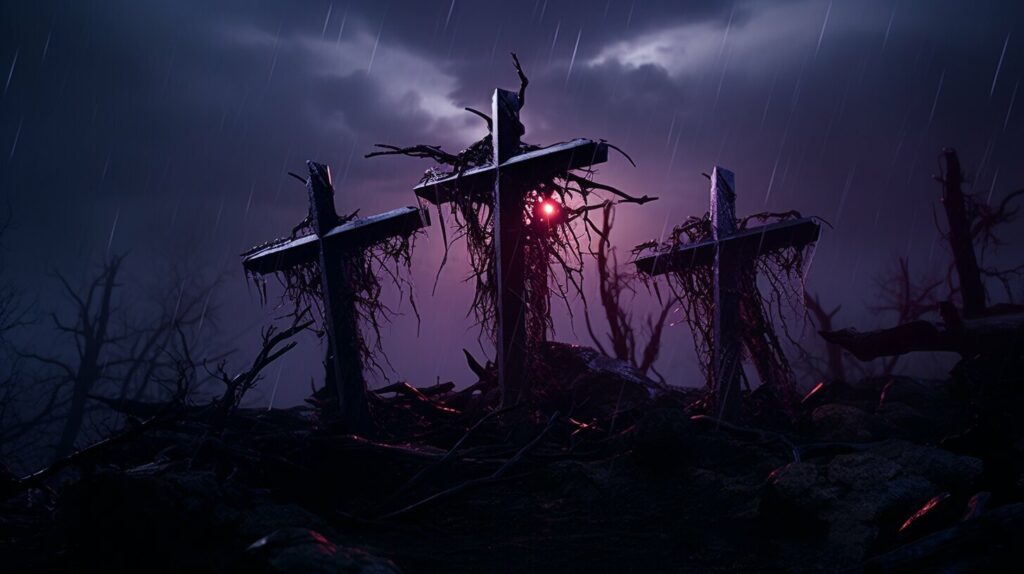
The Color Purple: In many Christian denominations, purple is the liturgical color of Lent and Good Friday. This color represents penance, humility, and sorrow for sin.
Crucifixion: The crucifixion of Jesus is one of the central events of Good Friday. It is a reminder of Jesus’ suffering and death on the cross for the sins of humanity.
By discussing these symbols and their meanings with your child, you can help them better understand the events of Good Friday and the importance of this day in Christian history.
Answering Common Questions
Children may have various questions about Good Friday. Here are some common ones:
- “Why is it called ‘Good’ Friday?”
- “Why did Jesus die on the cross?”
- “Why do people fast on Good Friday?”
- Why do we go to church on Good Friday?
- “What does the cross symbolize?”
Despite the sad events associated with this day, it is called ‘Good’ Friday because it is a reminder of Jesus’ sacrifice for humanity, which is considered the ultimate act of love and goodness.
According to the Bible, Jesus died on the cross to save humanity from sin and offer them the gift of eternal life in heaven.
Some people choose to fast on Good Friday as a form of sacrifice and remembrance of Jesus’ sacrifice on the cross.
Going to church on Good Friday is a way to honor Jesus’ sacrifice and reflect on its significance. It is also a time for prayer and contemplation.
The cross is a symbol of Jesus’ sacrifice on the cross and the love he had for humanity. It is a reminder of the forgiveness and hope that His sacrifice offers.
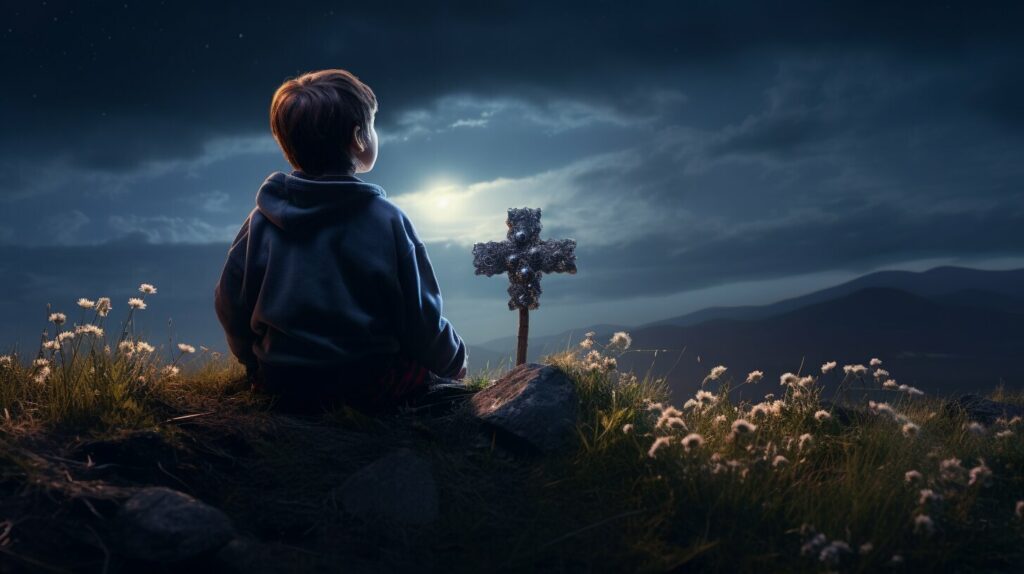
Activities and Crafts for Understanding Good Friday
If you want your child to have a deeper understanding of Good Friday, there are many fun and educational activities you can do together. These activities can help reinforce the concepts of sacrifice, forgiveness, and love that are central to this day.
1. Create a Homemade Cross
One way to help your child understand the significance of the cross is to create a homemade version together. You can use materials such as popsicle sticks, twigs, or even paper to construct a simple cross. Use this activity to discuss the reasons why the cross is an important symbol of Christianity.
2. Color a Good Friday Coloring Page
There are many coloring pages available online that feature scenes from the story of Good Friday. You can print out these pages and color them with your child while discussing the events and their significance. This activity can help your child visualize the story of Jesus’ sacrifice and better understand the meaning behind it.
3. Act out the Story of Jesus’ Crucifixion
Acting out the story of Jesus’ crucifixion can be a powerful way to help your child understand what happened on Good Friday. You can use props and costumes to bring the story to life and encourage your child to ask questions and discuss their feelings about the events.
4. Make a Good Friday Memento
Creating a memento can be a great way to help your child remember the lessons of Good Friday. You might make a small cross out of clay, create a painted wooden plaque, or even write a prayer or message of gratitude on a piece of paper to display in your home.
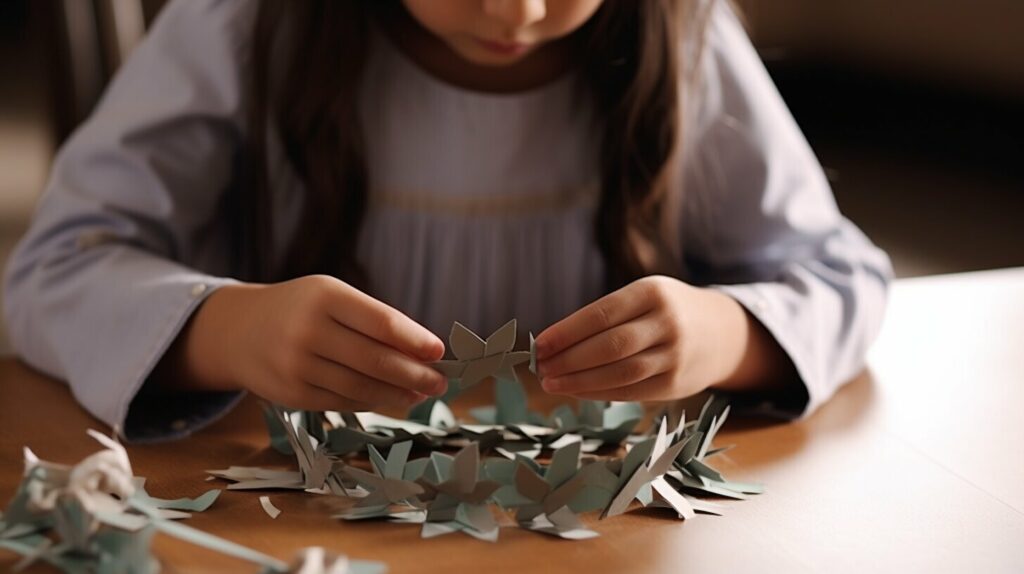
These activities provide a fun and engaging way to teach your child about Good Friday and its significance. By engaging in hands-on activities, your child can learn about Jesus’ sacrifice and the love and compassion that are central to this day.
Sharing Messages of Love and Compassion
Good Friday is a day to reflect on the selfless act of love that Jesus demonstrated through his sacrifice. As you explain the story to your child, it’s important to emphasize the messages of love and compassion that are at the heart of Christianity. Here are a few ways to share these values with your child:
- Encourage empathy: Help your child understand how Jesus showed empathy toward others, even his enemies. Talk about ways that your child can show empathy to their friends, family, and strangers.
- Practice forgiveness: Forgiveness is a central theme in Christianity, and Good Friday is a great time to discuss the importance of letting go of grudges. Encourage your child to forgive others when they make mistakes.
- Model love: Children learn through example, so be sure to model love and compassion in your own behavior. Show kindness to others, and talk about ways that you try to help those in need.
Through these simple actions, you can help your child understand the true meaning of Good Friday and the values that are central to Christianity.

Attending Good Friday Services
If you are interested in attending Good Friday services with your child, it can be a great way to further engage them in understanding the significance of this day. Many churches and religious organizations hold special services on Good Friday, which typically include prayers, hymns, and readings from the Bible.
These services are often somber and reflective, as they focus on Jesus’ sacrifice and the importance of forgiveness. As a result, it is important to prepare your child for what to expect, so they can fully participate and appreciate the experience.
Before attending the service, you may want to explain to your child what will happen and what they can expect to see and hear. This can help to alleviate any fears or confusion and ensure they feel comfortable during the service.
During the service, encourage your child to listen and participate as much as possible. You can also explain any unfamiliar terms or concepts that may be mentioned.
After the service, take some time to reflect on what you and your child learned and experienced. You may want to discuss the messages of love and compassion that were emphasized during the service and how they can be applied in your daily lives.

Attending Good Friday services can be a meaningful way to teach your child about the importance of this day and its significance in the Christian faith. It can also be a powerful reminder of the sacrifice that Jesus made for all of us.
Encouraging Reflection and Gratitude
While Good Friday is a solemn occasion, it can also be a time for reflection and gratitude. Encourage your child to take a moment to think about the sacrifices that Jesus made and how they relate to their own life.
You can also help your child express their gratitude by writing a thank-you note to someone who has made a positive impact on their life. This can help them understand the importance of showing appreciation for those who have helped them along the way.
If your child is old enough, you can have an open conversation about the meaning of gratitude and how it can improve one’s overall well-being.
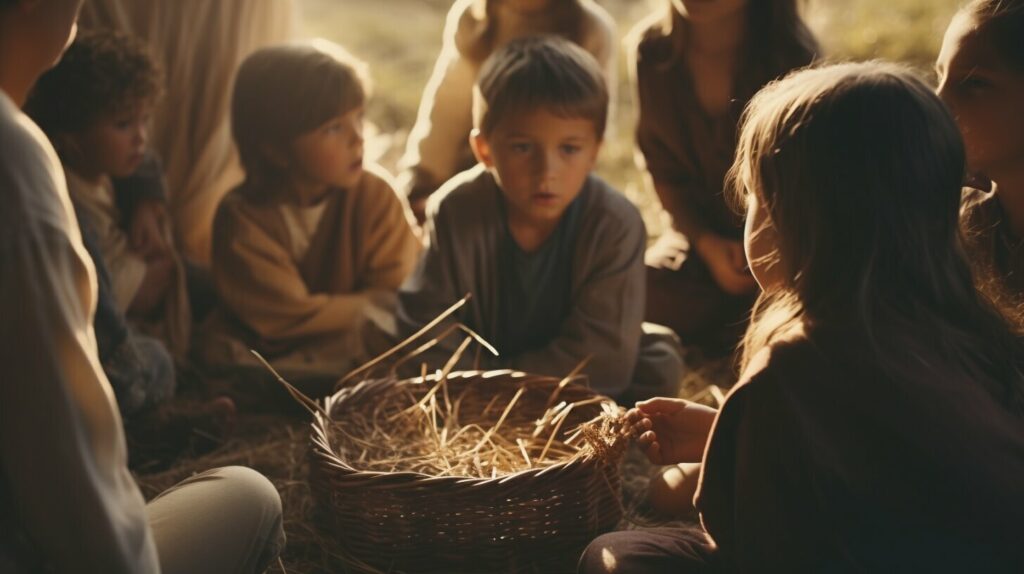
Remember that Good Friday is a time to reflect on Jesus’ sacrifice and the love and compassion that he showed to others. Encourage your child to embody these values in their own life and to always treat others with kindness and respect.
Conclusion:
Explaining Good Friday to children can be a daunting task, but it’s an important one. By breaking down the significance of this day in age-appropriate terms, you can help your child develop a deeper understanding and appreciation for Jesus’ sacrifice. Remember to use simple language, and be prepared to answer any questions your child may have.
As you talk to your child about Good Friday, don’t forget to emphasize the messages of love and compassion that are at the heart of this holiday. Encourage your child to think about ways they can show empathy and kindness to others, not just on Good Friday, but every day.
Finally, attending Good Friday services can be a powerful way to help your child connect with the story of Jesus’ crucifixion. If your family participates in this tradition, be sure to talk to your child beforehand about what to expect and how to make the experience meaningful.
Overall, we hope this guide has been helpful in simplifying Good Friday for children and providing practical tips for discussing this important holiday. Remember, the most important thing is to approach the conversation with an open heart and a willingness to listen and learn alongside your child.
Can You Provide Simple and Friendly Explanation of Juneteenth to a Child?
Juneteenth celebrates the end of slavery in the United States. On this day, we teach history of juneteenth to children by explaining that it marks the moment when slaves in Texas finally learned they were free, two years after the Emancipation Proclamation was signed. It’s a time to reflect on the hardships endured by African Americans and to celebrate freedom and equality for all.
FAQ
Q: How do I explain Good Friday to my child?
A: Explaining Good Friday to a child can be done in a simple and friendly way. You can say that Good Friday is a special day when we remember the story of Jesus, who died on the cross to show us how much he loved us.
Q: Why is Good Friday significant?
A: Good Friday is significant because it marks the crucifixion of Jesus. It is a day when Christians remember the sacrifice Jesus made for all of us. It reminds us of his love and teaches us about forgiveness and empathy.
Q: What does Jesus’ sacrifice mean?
A: Jesus’ sacrifice on Good Friday is considered a selfless act of love. He willingly gave up his life to save us from our sins and show us the path to forgiveness. It is a powerful lesson about the depth of love and the importance of putting others before ourselves.
Q: How can I explain death and resurrection to my child?
A: When talking about death and resurrection, you can simplify the concepts for a child. You can say that Jesus died on the cross, but then he came back to life on Easter Sunday. It shows that even though something sad happened, there can be new beginnings and hope.
Q: What is the story of Good Friday?
A: The story of Good Friday is about Jesus’ journey and crucifixion. It tells how Jesus was betrayed, arrested, and crucified on a cross. By explaining this story to children in a storytelling format, they can better understand the significance of Good Friday.
Q: What symbols and traditions are associated with Good Friday?
A: Good Friday is associated with symbols like the cross and crucifixion. The color purple is often used to represent sorrow and reflection. Traditions include attending church services, fasting, and participating in acts of charity.
Q: Why is it called “Good” Friday?
A: Good Friday is called “Good” because even though it was a sad day when Jesus died, it is a day when Christians believe that Jesus showed his love for humanity in the most selfless way possible. It reminds us of the goodness and love that Jesus represents.
Q: What activities can help children understand Good Friday?
A: There are several activities and crafts that can help children understand Good Friday. For example, they can create homemade crosses or color pages depicting the story of Jesus’ crucifixion. Acting out the story with simple props can also be a helpful and engaging activity.
Q: How can I instill messages of love and compassion on Good Friday?
A: On Good Friday, you can encourage children to practice acts of love and compassion. This can be done by engaging in acts of kindness, such as helping someone in need or doing something nice for a family member or friend. It’s important to discuss the values of love and compassion and how they relate to Jesus’ sacrifice.
Q: Should I attend Good Friday services with my child?
A: Attending Good Friday services can be a meaningful way to further engage children in understanding the significance of this day. It provides an opportunity to observe religious rituals, listen to teachings, and participate in traditions alongside the community. It’s important to prepare your child beforehand and explain what to expect to make the experience more meaningful for them.
Q: How can we encourage reflection and gratitude on Good Friday?
A: Reflection and gratitude can be encouraged on Good Friday through age-appropriate activities. For example, you can take a moment to talk with your child about what they are thankful for, or you can create a gratitude jar where everyone writes down something they are grateful for on pieces of paper and places them in the jar. This helps children reflect on the blessings in their lives and express their gratitude.






